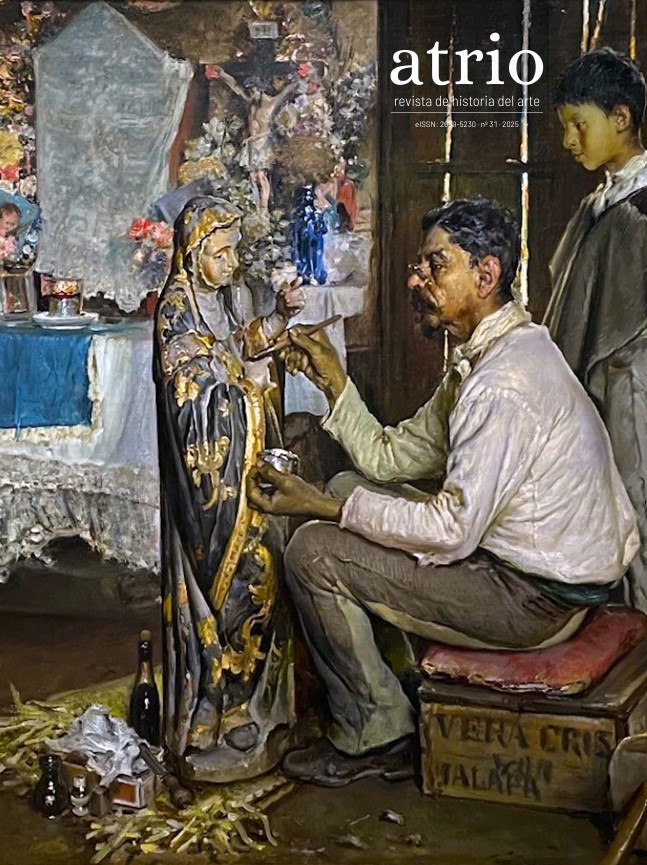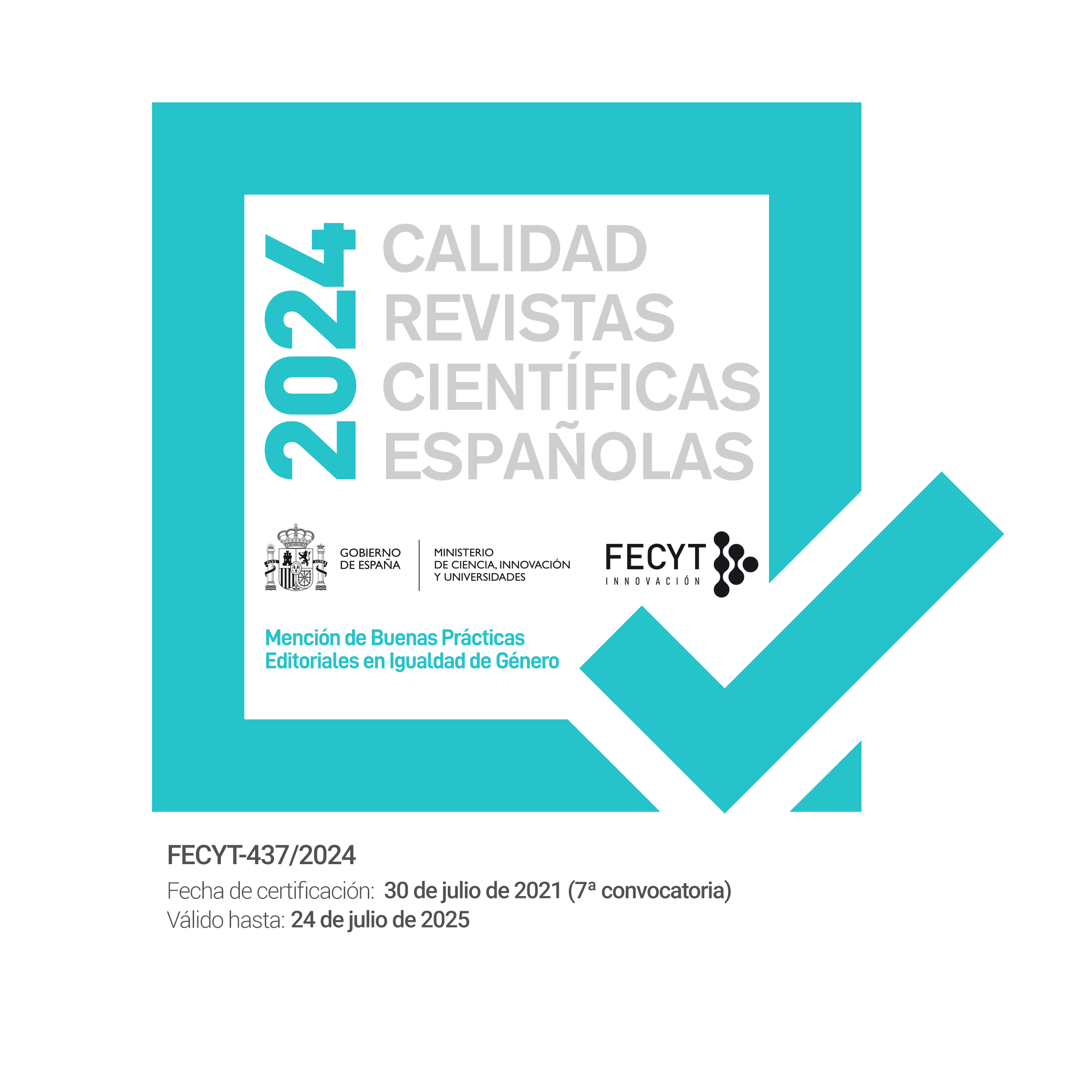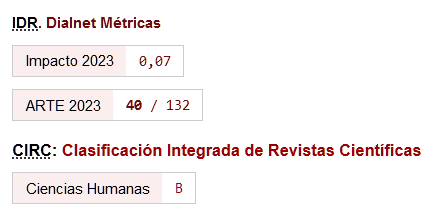The Two Faces of Goya: Illustrated and Dionysian. Reflections from the Thoughts of Nietzsche and Danto.
DOI:
https://doi.org/10.46661/atrio.11100Keywords:
Arthur Danto, Caprichos, Enlightenment, Francisco de Goya, Friedrich Nietzsche, 18th CenturyAbstract
Francisco de Goya’s art is an art full of dualities, which seem to revolve around the confrontation between light and darkness. Throughout history, several authors have reflected on the proximity or distance of the Spanish artist to the ideals of the Enlightenment and his trust in the light of reason. Arthur Danto, with regard to an exhibition dedicated to Goya’s links with the Enlightenment, seems to deny, or at least doubt, the Enlightenment meaning of Goya's work, linking it, in some way, to the thought of Friedrich Nietzsche. The theories of these two authors, Danto and Nietzsche, offer several theses that allow us to study Goya as a subject immersed in a double nature of the Enlightenment, full of light and rationality, and Dionysian, whose darkness implies the loss of faith in reason and modern society.
Downloads
References
Goya, Francisco de. Iriarte, Bernardo de, Carta; 1 de abril de 1794. Francisco de Goya, Diplomatario.
https://ifc.dpz.es/recursos/publicaciones/10/54/_ebook.pdf.
Fuentes bibliográficas
Álvarez Barrientos, Joaquín. “Sobre la construcción de la imagen de Goya: algunos usos y abusos.” En Goya y su contexto, editado por Diputación Provincial de Zaragoza e Institución “Fernando el Católico”, 17-38. Zaragoza: Institución “Fernando el Católico”, 2013.
Borck, Ekike. “Nietzsche, el nihilismo y el arte de la transfiguración.” Estudios sobre Nietzsche, no. 19 (2019): 13-42. https://doi.org/10.24310/EstudiosNIETen.vi19.11714.
Danto, Arthur. Encounters and Reflections. Berkeley y Los Ángeles: University of California Press, 1997.
Danto, Arthur. La transfiguración del lugar común. Barcelona: Paidós, 2002.
Danto, Arthur. El abuso de la belleza. Barcelona: Paidós, 2005.
Danto, Arthur. Qué es el arte. Barcelona: Paidós, 2018.
Diario de Madrid, 6 de febrero, 1799. Biblioteca Nacional de España. https://hemerotecadigital.bne.es/hd/viewer?oid=0001598112&page=4. Consultado el 27 de septiembre de 2024.
Diderot, Denis. Investigaciones filosóficas sobre el origen y naturaleza de lo bello. Madrid: Aguilar, 1981.
Eisendraht, Rachel. “Shakespeare and the Repetition of the Commonplace.” En A Companion to Arthur C. Danto, editado por Jonathan Gilmore y Lydia Goehr, 190-198. Nueva York: John Wiley and Sons, 2022. https://doi.org/10.1002/9781119154242.ch21.
Foradada, Carlos. Goya recuperado en las Pinturas negras y El coloso. Gijón: Trea, 2019.
Helman, Edith. Trasmundo de Goya. Madrid: Alianza Editorial, 1993.
Lanceros, Patxi, La herida trágica. El pensamiento simbólico tras Hölderlin, Nietzsche, Goya y Rilke. Barcelona: Anthropos Editorial, 1997.
Leocata, Francisco. “Ilustración y modernidad en los primeros escritos de Nietzsche.” Sapientia, no. 56 (2001): 445-480.
López Vázquez, José Manuel. Explicaciones de los Caprichos de Goya. Lugo: Editorial Ta Ta Ta, 2023.
Madrid Casado, Carlos M. “Goya, ¿el espíritu de la Ilustración?” El Catoblepas: revista crítica del presente, no. 163 (2015): 1-10.
Nietzsche, Friedrich. Crepúsculo de los ídolos (o cómo filosofar a martillazos). Madrid: Alianza Editorial, 1973.
Nietzsche, Friedrich. Humano, demasiado humano. México: Mexicanos Unidos, 1986.
Nietzsche, Friedrich. Ecce Homo. Madrid: Alianza Editorial, 2005.
Nietzsche, Friedrich. El origen de la tragedia. Madrid: Austral, 2006.
Saavedra, Santiago, María Victoria Lasso de la Vega, Rufino Díaz, Lola Gómez de Aranda, María Esther Garrido, y Agustín Martínez, eds. Goya y el espíritu de la Ilustración. Madrid: Museo Nacional del Prado, 1988. Publicado en conjunto con una exhibición del mismo título organizada y presentada en el Museo Nacional del Prado en Madrid, 6 de octubre de 1988-18 de diciembre de 1988, el Museum of Fine Arts en Boston, 18 de enero de 1989-26 de marzo de 1989 y el Metropolitan Museum of Art en Nueva York, 9 de mayo de 1989-16 de julio de 1989.
Stoichita, Victor y Anna Maria Coderch, El último carnaval: un ensayo sobre Goya. Barcelona: Siruela, 2000.
Todorov, Tzvetan. Goya, a la sombra de las luces. Barcelona: Galaxia Gutenberg, 2022.
Tomilson, Janis. Goya en el crepúsculo del siglo de las luces. Madrid: Cátedra, 1993.
Published
How to Cite
Issue
Section
License
Copyright (c) 2025 Daniel Sánchez Requejo

This work is licensed under a Creative Commons Attribution-NonCommercial-ShareAlike 4.0 International License.
Los autores/as que publican en Atrio. Revista de historia del arte están de acuerdo con los siguientes términos:
- Los autores/as conservan los derechos de autor y garantizan a la revista el derecho de ser la primera publicación del trabajo al igual que licenciado bajo una licencia de Creative Commons Attribution-NonCommercial-ShareAlike 4.0 International License que permite a otros compartir el trabajo con un reconocimiento de la autoría de este y la publicación inicial en esta revista.
- El autor/a o cedente del material que se entrega para su publicación autoriza a la revista para que publique, sin obligación alguna (económica o de otra naturaleza), el contenido del referido manual tanto en formato papel, como en digital, así como en cualquier otro medio. Esta cesión de uso del material entregado comprende todos los derechos necesarios para la publicación del material en la revista. Quedan garantizados, simultáneamente, los derechos morales del autor
- El autor/a o cedente es plenamente consciente y está de acuerdo con que todos o cualesquiera de los contenidos proporcionados, formarán una obra cuyo uso se cede a la revista para su publicación total o parcial.
- El autor/a o cedente garantiza ser el titular de los derechos de Propiedad Intelectual sobre los contenidos proporcionados, es decir, sobre el propio texto e imágenes/fotografías/obras fotográficas que se incorporan en su artículo.
- El autor/a o cedente asegura y garantiza: (i) que todo el material enviado a la revista cumple con las disposiciones legales aplicables; (ii) que la utilización de cualquier material protegido por derechos de autor y derechos personales en la concepción del material se encuentra regularizada; (iii) que obtuvo las licencias de derechos, permisos y autorizaciones necesarias para la ejecución del material, inclusive los derechos de imagen, si fueran aplicables; y (iv) que el material no viola derechos de terceros, incluyendo, sin limitarse a estos, los derechos de autor y derechos de las personas.
- El autor/a o cedente, exime a la revista de toda y cualquier responsabilidad con relación a la violación de derechos de autor, comprometiéndose a emplear todos sus esfuerzos para auxiliar a la revista en la defensa de cualquier acusación, medidas extrajudiciales y/o judiciales. Asimismo, asume el abono a la revista de cualquier cantidad o indemnización que esta tenga que abonar a terceros por el incumplimiento de estas obligaciones, ya sea por decisión judicial, arbitral y/o administrativa.













